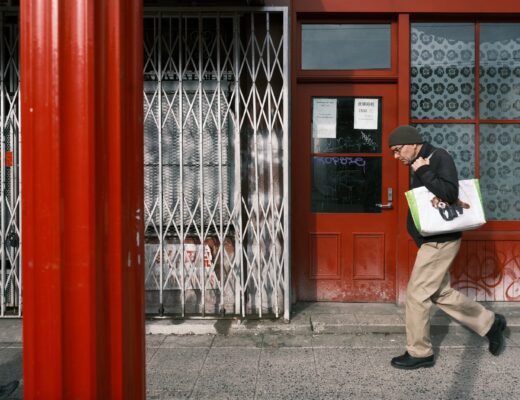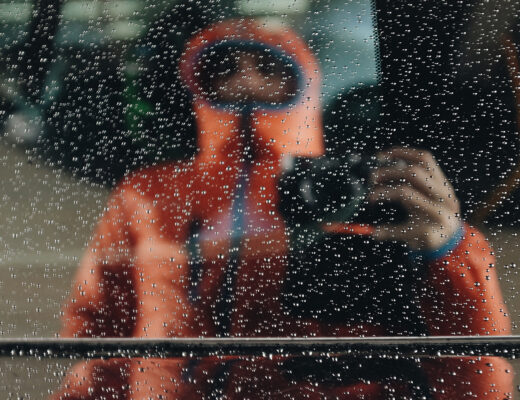When I’m not photographing dance and theatre, I’m working on dance and theatre. If you’ll forgive a little history I’ll explain.
My way into photography was over a decade ago when I was training as a lighting designer at drama school. I’d tear my hair out that I couldn’t photograph my designs worth a damn. It was maddening that I couldn’t preserve something that I knew would cease to exist after the show had ended. One day, a professional photographer came in to photograph a show I’d lit. An unobtrusive little guy with grey hair walked around the theatre during the dress rehearsal with his cameras and a few days later dropped off an envelope of full of prints. I was gobsmacked – the photographs were gorgeous, brilliant expressions of light and shade. Every moment told its own story. These photos were capturing everything I was trying, and failing, to. That photographer was John Haynes and I knew when I saw those images that photographing performing arts was going to be a big part of my life.
Back in the present and I divide my time between photography and lighting and touring shows. I recently went on a short tour of the UK with a fabulous show from Goat and Monkey and I wanted to share my photographs taken while working on the show to show how I use my X-Pro2 to document what I do, and how documentary photography fits in with the rest of my photographic work.
The EXIF data tells me it is 04.23 and its the first day of rehearsals. I get up in the pitch black, go through the motions of a shower and coffee and stumble out into a starry morning. I have a van with the set inside parked outside my house and I’ve got to drive into central London to get this thing underway. With my Fuji and the XF18mm on the front seat, I put jazz on the radio and make a move.
The Devil Speaks True is an intense and chilling show exploring the last hours of Banquo’s life. The audience sit in a deep blackout and wear headphones listening to a binaural soundtrack that includes interviews with armed forces personnel sharing their experiences of conflict and post-traumatic stress. The effect is very immersive and intimate. This was the second time that the show had toured and in this rehearsal week we had to work on some new sound and lighting cues as well as rehearse a new performer and a new technical stage manager – me.
The show uses sound, lighting, smoke and projection which is all run from a laptop and triggered by a single keystroke at the beginning. Painstaking tweaking in rehearsal is needed to get everything running in sync. The swirling and immediate designs make this much more technically involved show than most.
In order to judge the technical elements of the show properly, we have to put ourselves in the audience’s position. This means several long days in a pitch dark rehearsal room with the only light coming from the MacBooks and head torches. The effects we use to provoke immersion in the audience, like scents and wind blowers, are constantly with us.
One of the things we all love about Fuji cameras is their portability. I never feel bored or lost for something to do if I have a book or a camera with me and during my breaks getting out of the basement and into the sunshine for a little street photography was exactly what needed.
Rehearsal week is done and the set is loaded back in the van, ready to hit the road. Small-scale touring has existed for almost as long as theatre has existed. There is something incredibly romantic about touring. You throw together your performers, your technician, your set, your props and your costumes and you fit your show into a new venue each day. To be sure, it is just about as far away from the glamorous world of the West End musicals as it is possible to get. There is never enough money or time, and sadly, the pressure on budgets has never been greater. Long days are the norm as are hours stuck in traffic jams on your way to far-flung parts of the country. But to look only at the downsides ignores all the fun. Walking into a new theatre each day and figuring out how to make your show work in a space you’ve never seen before is tough, but what a feeling of satisfaction when you hear the applause at the end! It might be a bind to live out of hotel rooms and be away from your home, but having a shared goal and endeavour with your tour mates brings a comradeship you don’t get elsewhere.
Ripp getting ready before we open the house to audience for the first show. These are snatched moments to relax before the everything kicks off. When you get clearance to start the show, you are so caught up in your cues to move props or set etc that time seems to contract and speed by.
My station for the show. Laptop controlling the show to the right, cue sheet taped to the back of the set, assorted technology, wireless transmitters and aerosol scent cans to the left. The show goes great, the audience dig it and with some great help from the venue we are packed up quick and onto the next venue.
You might be wondering why I haven’t been talking much about my camera and the part it played in this story, but that is exactly the point. An unobtrusive camera that gets out the way and lets you document the world around you is what the X-Pro2 is. Having the silent shutter, optical viewfinder and great low-light quality make this camera essential to me, and I love pulling it out in quiet moments. All of the images in this article were taken with either the criminally underrated XF18mm or the XF35/1.4. I just put either on the camera depending on what mood I was in and took it from there. This is the best complement I can pay to the camera, it is just there.
I use my X-Pro2 for every type of photography that I do and I love its versatility. This is great because I think it is really important to blend together your personal and professional work. When I photograph my everyday life in a documentary style I’ll often get ideas from the images that I’ll use when photographing performance. Or, sometimes capturing an image of a person looking a certain way will give me an idea for an actor’s headshot. Developing your style with these experiments in your personal photography is a great way of giving your professional work an identity.
Headphones set out waiting for an audience. By the time the tour drew to a close we were settled into a groove when it came to setting the show up and the days became more relaxed. I noticed that the images I was taking were less and less the immediate snapshots of earlier and become more thoughtful.
Ripp is a stunning perfomer. Even warming up there is a quiet power about what he does. I love multiple exposures and dragging the shutter. You can convey a lot about movement and mood by adding a sense of unreality to your images.
The end. An empty van, another successful tour. Until the next time.
Documenting the world around you is an important way to improve your photography. Challenging yourself to see the everyday in a new way and tell a story with your images helps you make photos with meaning, as opposed to pretty pictures. It’s like going to the photographic gym. Regardless of the camera you use, your main genre of photography or your job, try documenting a slice of your life as if someone you just met asked what is that you do and you wanted to show them. You might find it makes you a better photographer.































